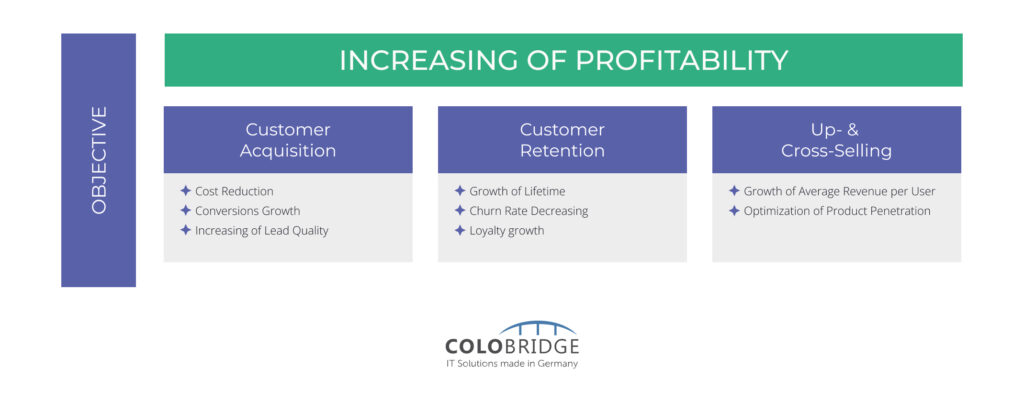Author: Volnyanskyi A.
Continuing to explore Customer Relationship Management (CRM) harnessing Data-Driven approach, let’s delve into how they can increase company revenue through optimizing marketing and sales operations.
How Data Changes Company Revenue
Increasing profitability can be seen as the result of a multitude of interconnected factors that depend on the established system of customer relationships within the company. By focusing efforts on improving the marketing strategy, revenue can be increased in various ways: attracting new customers, retaining those who are considering leaving, or implementing additional/cross-selling of alternative products. Each of these components can be broken down into specific tasks and key performance indicators.

Attracting Customers
Attracting customers is arguably the most obvious task for marketing and sales departments when it comes to increasing revenue. During customer acquisition, the following subtasks are identified:
- Reducing the cost of the product
- Increasing conversion rates
- Improving the quality of potential customers
- Increasing the number of potential customers
Customer Retention
Indeed, customer retention, often times, is asserted to be a valuable source of income for companies. Indeed, up to 90% of monthly revenue for many companies is generated through customer retention. Strategies that can be implemented to achieve this goal include:
- Increasing customer lifetime value
- Reducing churn
- Enhancing loyalty
Cross-selling and Upselling
Cross-selling and upselling are not only sales tactics, but also important components of profitability optimization. The goals of customer acquisition, retention, and cross-selling/upselling are interconnected components that contribute to increasing company profitability. What sets our data-driven CRM system apart is its ability to seamlessly integrate them, turning data into actionable insights. By analyzing current operations and the state of your customer relationships, you gain invaluable information about them. A comprehensive understanding of the customer enables you to prioritize effectively and choose the communication approach that will lead to increased organizational revenue.
Colobridge’s Expert:
“The company has many ways to increase profitability. Attracting and retaining customers, along with upselling and cross-selling, are important tools for achieving high results. Together with our subsidiary company Beinf.ai, we have developed the solution that will help you reach your desired goal in a short time, with minimal initial investment and without a team with specific technical skills. Our task is not only to offer you a ready-to-use tool and the Colobridge platform, but also to provide all the expertise you will need along the way.
Learn more about the Data-Driven approach, request a free data audit, or get consultation on deploying the AI Engine aaS from our specialist”.





